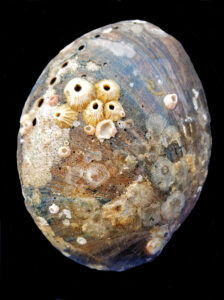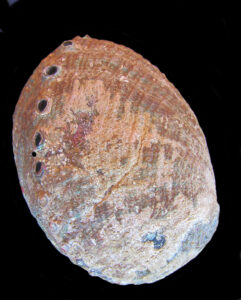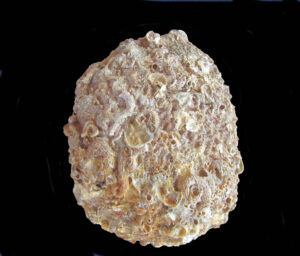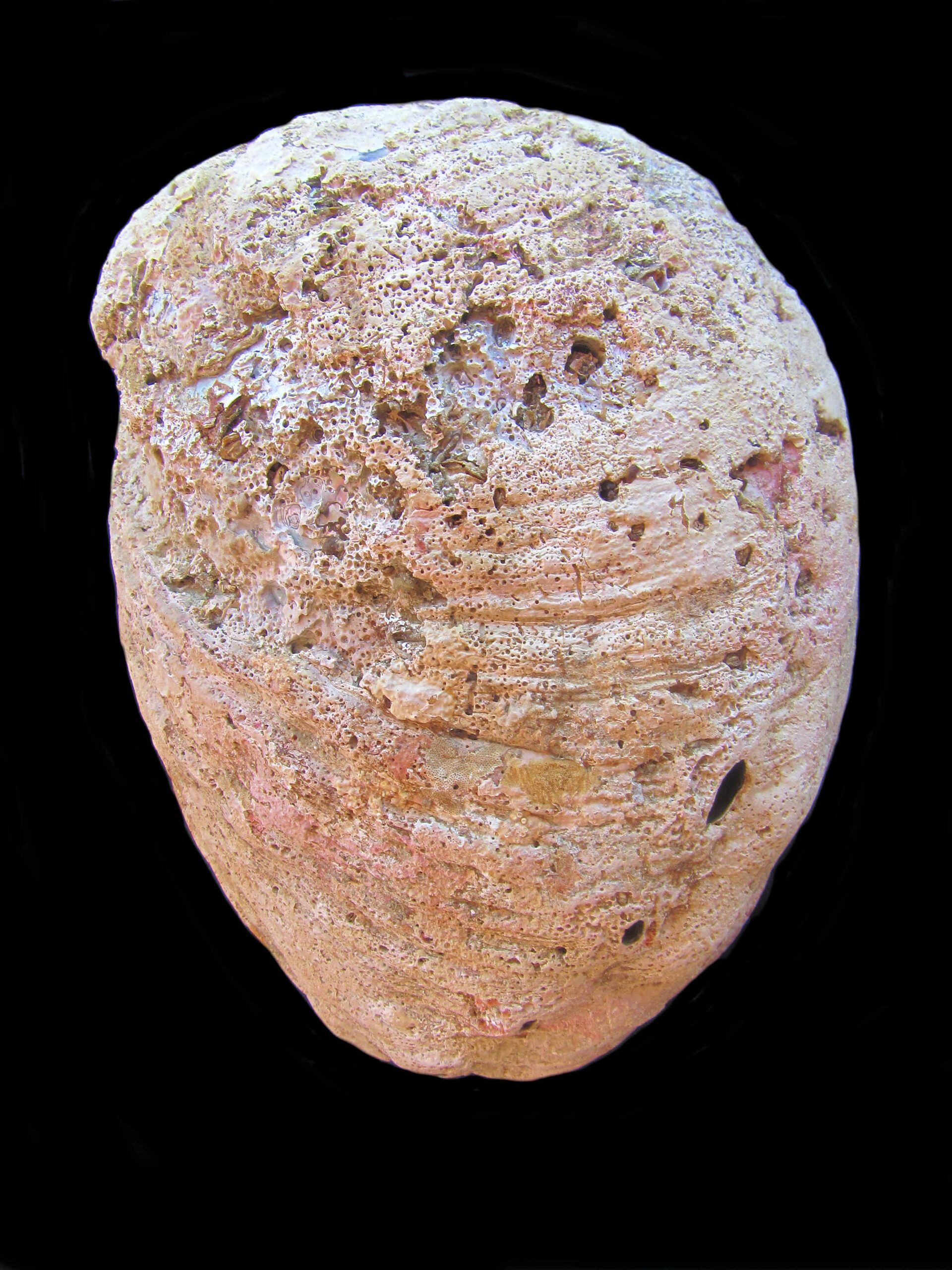The Abalones are members of the Haliotidae Family which has approximately ninety global members, that are known in Mexico as abulo’n. They are oval in outline and have bowl or ear-shaped shells. In some locations, abalone are called Sea-Ears. The body whorl composes the great majority of the shell. The are strongly constructed with a low spire and a very large aperture, comprising almost all of the shell’s underside. The degree of arch on the dorsal surface varies within, and between, species. Younger abalone have a flatter profile than more mature specimens.
The exterior of the shell has sculpting ranging from mostly smooth to wavy or spirally ridged. Frequently they are overgrown by marine organisms that cover the shell’s exterior. Abalone have a row of holes along the left edge of the shell that allows circulated water to exit. The number and height of the base of these holes are important in distinguishing species. The interior of these shells is iridescent, colorful, mother-of-pearl color. Abalones can produce crude, low value pearls. They range in maximum size from 2.5 cm (1.0 inch) to over 30 cm (11.8 inches) in length.
Abalone do not have an operculum or periostracum. They are known to hybridize making species identification difficult. Abalone cling to rocks by use of a powerful foot muscle. In some cases, hundreds of lbs of force are required to separate the animal from the rock. Living animals often display a row of short tentacles (epipodia) between the rock and the shell edge. These tentacles are sensory organs, sensing touch, water movement, and light. The structure and color of the epipodia is another key in determining species identification. Abalone are herbivores, grazing on algae. Pigments in the algae determine the color in the shell’s exterior. Abalone are preyed upon by crabs, fish, marine mammals, and predatory mollusks.
They are found from the mid-tide region to depths in excess of 365 m (1,200 feet). They are found primarily in the Pacific and Indian Oceans and the Eastern Atlantic but have a global distribution that varies by location. In Mexico, abalone have a limited distribution, mostly along the west coast of Baja; they are not found in the Sea of Cortez or along the West coast of Mainland Mexico. Six species are found along the Pacific coast of the Baja Peninsula.
All abalone species are edible and as a result they have been fished throughout much of history. The first recorded mention of Abalone was by Aristotle around 400 BC. The first recorded story of abalone fishing comes from Japan on September 12, 425 AD. In this story, a diver named Osahi was trying to collect an abalone pearl for the Emperor. He had a rope tied around his waist for safety. When he didn’t surface, he was pulled to the surface, dead. He was still holding on to a large abalone that contained a pearl the size of a peach.
The shell of the abalone has also been valued throughout history, both for its beauty and its usefulness as a bowl. Native Indians along the Baja California and California coastlines made extensive use of abalone and have been found in archeological sites as far away as northern Utah and Texas. Abalone shells are also the subjects of modern paintings, dating back to 1604. Abalone are currently fished and farmed along the Baja Peninsula. The earliest commercial abalone fishermen along the Peninsula were the Chinese; they were followed by the Japanese and then the local Mexicans.



